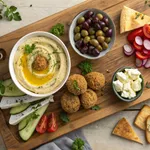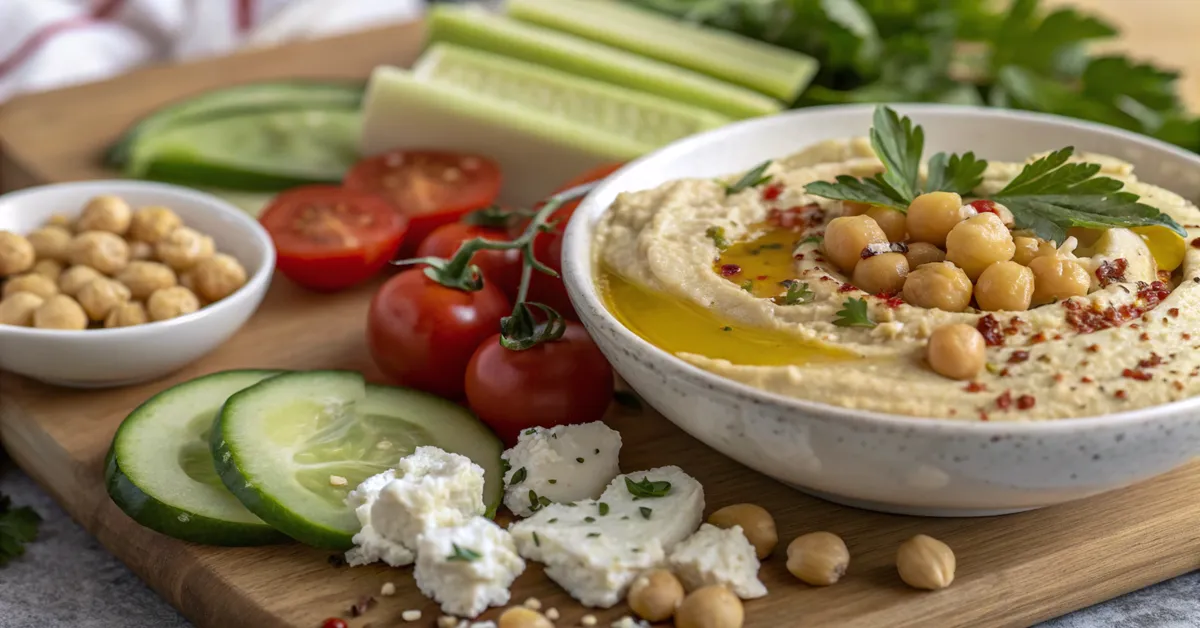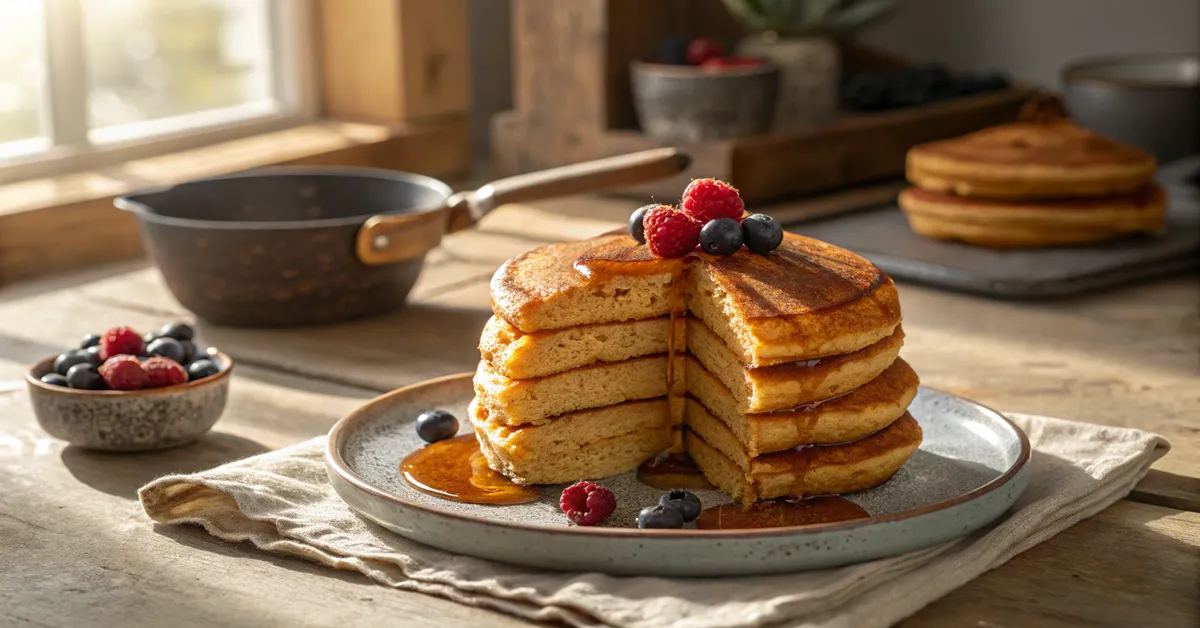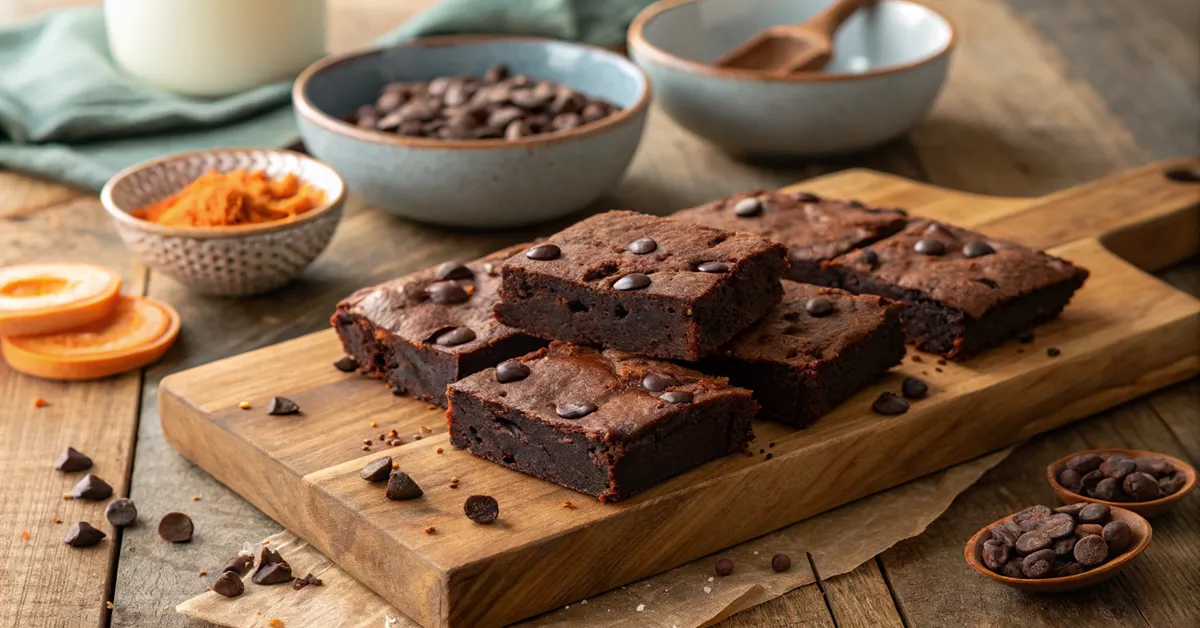7 Easy Mediterranean Breakfast Board Ideas That’ll Change Your Mornings
You know that feeling when unexpected guests show up and you’re scrambling to put together something that looks fancy but doesn’t require a culinary degree? That’s exactly what happened to me last spring when my neighbor knocked on my door at 9 AM with her visiting parents in tow. I panicked for about two seconds, then remembered the Mediterranean breakfast board I’d been experimenting with.
Twenty minutes later, we were all gathered around my kitchen island, chatting over a colorful spread of hummus, fresh vegetables, feta cheese, and warm pita bread. Her dad, who claimed he “didn’t eat rabbit food,” was dipping cucumber slices into baba ganoush and asking for the recipe. That’s when I realized the magic of a Mediterranean breakfast board – it’s not just about putting food on a platter, it’s about creating a relaxed, sharing experience that makes everyone feel welcome.
The Mediterranean way of eating has been around for thousands of years, and there’s a good reason it’s stuck around. It’s simple, fresh, and focuses on ingredients that actually taste good together. When you create a Mediterranean breakfast board, you’re not just making breakfast – you’re bringing a bit of that relaxed Mediterranean lifestyle to your own table. Plus, it’s one of those meals that looks way more complicated than it actually is, which makes you feel like a total kitchen rockstar.
Table of Contents
Table of Contents

7 Easy Mediterranean Breakfast Board Ideas That’ll Change Your Mornings
- Total Time: 40 minutes
- Yield: 6-8 servings
Description
A beautiful, healthy breakfast spread featuring traditionalMediterranean Breakfast Board that contains – ingredients like hummus, feta cheese, fresh vegetables, and warm pita bread, perfect for sharing or meal prep.
Ingredients
1 cup prepared hummus (homemade or store-bought)
1 cup prepared baba ganoush
6-8 prepared falafel (fresh or store-bought)
1 cup prepared tabouli
4 oz feta cheese, crumbled or sliced
1-2 large tomatoes, sliced
1 English cucumber, sliced
6-7 radishes, halved or sliced
1/2 cup mixed olives
1/4 cup marinated artichokes or mushrooms
2-3 pita breads, cut into quarters
1/4 cup early harvest extra virgin olive oil
2 tablespoons za’atar spice blend
1/2 cup fresh grapes
Fresh herbs (parsley, mint, dill) for garnish
Instructions
- If making components from scratch, prepare hummus, baba ganoush, falafel, and tabouli 1-2 days ahead and refrigerate
- Remove dips from refrigerator 30 minutes before serving to bring to room temperature
- Warm falafel according to package directions or homemade recipe
- Place hummus and baba ganoush in small bowls on a large wooden board or platter
- Add tabouli to another small bowl and place on board
- Arrange sliced tomatoes, cucumber, and radishes around the bowls
- Scatter feta cheese, olives, and marinated vegetables across the board
- Place warm pita bread quarters around the edges
- Drizzle olive oil over vegetables and into small dish for dipping
- Sprinkle za’atar over feta and into small dish with olive oil
- Garnish with fresh grapes and herbs
- Serve immediately with small spoons and knives
Notes
- Make dips 1-2 days ahead for better flavor development
- Falafel can be made ahead and frozen, then cooked from frozen
- Substitute any vegetables based on seasonal availability
- For quick version, use all store-bought components
- Prep Time: 30 minutes (with homemade components)
- Cook Time: 10 minutes (for falafel)
- Category: Mediterranean Breakfast Recipes
- Method: Assembly/No-cook (except falafel)
- Cuisine: Mediterranean
Nutrition
- Serving Size: 1/6 of board
- Calories: 365 kcal
- Sugar: 8g
- Sodium: 720mg
- Fat: 22g
- Saturated Fat: 6g
- Unsaturated Fat: 14g
- Trans Fat: 0g
- Carbohydrates: 32g
- Fiber: 9g
- Protein: 15g
- Cholesterol: 20mg
Building Your First Mediterranean Breakfast Board
Getting Started With Simple Ingredients

Here’s the thing about creating a Mediterranean breakfast board – you don’t need to shop at specialty stores or break the bank. Most of what you need is probably already in your regular grocery store. The key is thinking about balance: something creamy, something crunchy, something fresh, and something that ties it all together with flavor.
I always start with what I call the “big three” – hummus, some kind of cheese (usually feta), and fresh vegetables. From there, you can add whatever else looks good or happens to be in your fridge. Maybe some olives if you’ve got them, or leftover roasted vegetables from dinner. The beauty of a Mediterranean breakfast board is that it’s flexible and forgiving.
Your basic shopping list:
- Hummus (store-bought is totally fine)
- Feta cheese or labneh
- Fresh tomatoes and cucumbers
- Pita bread or good crackers
- Olives (whatever kind you like)
- Extra virgin olive oil
- Fresh herbs if you have them
Making Everything Work Together
The secret to a great Mediterranean breakfast board isn’t complicated – it’s about creating little flavor combinations that make sense. Think of it like this: if you were eating in a Greek taverna, what would they put together? Tomatoes with feta and olive oil. Cucumber with herbs. Hummus with everything.
I learned this the hard way when I first started making these boards. I’d put together all these random ingredients that looked pretty but didn’t actually taste good together. Now I think about creating “neighborhoods” on my board – areas where ingredients that complement each other live close together.
Simple pairing ideas:
- Feta + tomatoes + olive oil = instant Greek salad vibes
- Hummus + cucumber + radishes = fresh and creamy
- Baba ganoush + roasted vegetables = smoky and rich
- Labneh + herbs + za’atar = tangy and aromatic
| Component | Best Paired With | Why It Works |
| Feta cheese | Tomatoes, olives, herbs | Salt balances acidity |
| Hummus | Raw vegetables, pita | Creamy contrast to crunch |
| Baba ganoush | Grilled vegetables | Smoky flavors complement |
| Fresh herbs | Everything! | Brightens heavy flavors |
Mediterranean Breakfast Board Recipe Variations
The Classic Middle Eastern Style Board
This is my go-to Mediterranean breakfast board when I want something that feels authentic and satisfying. It’s based on the traditional mezze concept, where lots of small dishes come together to make a complete meal. The star here is definitely the homemade falafel, but don’t stress if you buy it from the store – life’s too short to make everything from scratch.
What makes this version special is the combination of textures and temperatures. You’ve got warm, crispy falafel next to cool, creamy hummus and baba ganoush. Fresh vegetables add crunch, while the tabouli brings in bright, herby flavors that wake up your taste buds. It’s like having a little Lebanese restaurant right on your dining table.
Key components for this board:
- Fresh or store-bought falafel
- Classic hummus and baba ganoush
- Homemade or store-bought tabouli
- Sliced tomatoes, cucumber, and radishes
- Quality feta cheese
- Mixed olives and marinated artichokes
- Warm pita bread cut into quarters
- Early harvest olive oil and za’atar for dipping
The trick with this Mediterranean breakfast board is timing. Make your dips and tabouli the night before, then just warm up the falafel and assemble everything in the morning. It takes about 30 minutes from start to finish, but most of that is just arranging things prettily on your board.
Quick and Easy Weekday Version
Let’s be real – not every morning calls for homemade falafel and fresh tabouli. Sometimes you need a Mediterranean breakfast board that comes together in 10 minutes flat while you’re still in your pajamas. This version focuses on store-bought shortcuts that still give you all the Mediterranean flavors without the fuss.
I call this my “emergency entertaining” board because it’s saved me more times than I can count when people drop by unexpectedly. The secret is keeping a few Mediterranean staples in your fridge and pantry so you’re always ready. Good olive oil, quality olives, and decent store-bought hummus can take you pretty far.
Quick assembly ingredients:
- Store-bought hummus (get the good stuff)
- Pre-crumbled feta or goat cheese
- Cherry tomatoes (no slicing needed)
- Baby cucumbers or pre-cut vegetables
- Mixed olives from the deli counter
- Crackers or pre-made pita chips
- Grapes for a sweet element
- Whatever fresh herbs you have on hand
| Time-Saving Tip | Store-Bought Option | Quality Indicator |
| Skip homemade hummus | Premium refrigerated brands | Smooth texture, rich tahini flavor |
| Buy pre-cut vegetables | Grocery deli section | Crisp, not wilted |
| Use quality crackers | Whole grain varieties | Sturdy enough for dipping |
| Choose easy proteins | Marinated feta, hard-boiled eggs | Fresh taste, good texture |
Assembly Tips and Presentation Ideas

How To Make Mediterranean breakfast board Look Like You Know What You’re Doing
Here’s a secret from someone who’s made dozens of Mediterranean breakfast boards: it doesn’t have to be perfect to look amazing. The trick is to create ‘organized chaos’—everything is arranged with a purpose, so it looks natural and inviting instead of stiff and overdone.
I always start with my biggest bowl (usually the hummus) and place it slightly off-center on my board. Then I work around it, filling in with smaller bowls and flat items. The goal is to make it look abundant without overcrowding – people should be able to reach everything easily without knocking other things over.
My assembly order:
- Place large bowls first (hummus, baba ganoush)
- Add medium bowls (olives, tabouli)
- Arrange flat items (cheese, vegetables, pita)
- Fill gaps with small items (nuts, herbs, grapes)
- Finish with drizzles and garnishes
Creating the Instagram-Worthy Shot (But Making It Taste Good Too)
Look, I’m not going to pretend that how food looks doesn’t matter. We eat with our eyes first, and a beautiful Mediterranean breakfast board just makes everything taste better. But here’s the thing – if you focus on making it functional and delicious first, the beauty usually follows naturally.
The best boards tell a story. Maybe it’s the story of a lazy Sunday morning with friends, or a quick healthy breakfast before work. Whatever story you’re telling, make sure every element serves a purpose beyond just looking pretty. That garnish of fresh mint? It should actually make the hummus taste better when someone tries it together.
Visual tricks that actually improve taste:
- Group similar colors together, then separate with contrasting elements
- Create height with small bowls and ramekins
- Leave some breathing room – overcrowded boards are hard to eat from
- Use garnishes that add flavor, not just color
| Visual Element | Functional Purpose | Taste Impact |
| Color contrast | Guides eye movement | Encourages variety |
| Height variation | Easy access | Better flavor combinations |
| Strategic spacing | Prevents mess | Cleaner eating experience |
| Edible garnishes | Flavor enhancement | Improved overall taste |
Storage and Make-Ahead Strategies For Mediterranean breakfast board
Prepping Your Mediterranean Breakfast Board Components
The beauty of a Mediterranean breakfast board is how many of the items can be made ahead without losing their freshness. In fact, many of the dips and salads actually taste better after sitting overnight because the flavors have time to meld together. It’s perfect for when you’re having guests or want to prep your meals for the week.
My Sunday routine now includes making a big batch of hummus and baba ganoush that I portion into containers for the week. I prep vegetables and store them in cold water with a splash of lemon juice to keep them crisp. The tabouli gets better every day for about three days, and feta cheese actually improves when it sits in good olive oil with herbs.
Make-ahead timeline:
- 3 days ahead: Hummus, baba ganoush, tabouli
- 2 days ahead: Falafel (store uncooked and fry fresh)
- 1 day ahead: Cut vegetables, marinate cheese
- Morning of: Final assembly and garnishing
Keeping Everything Fresh and Delicious
The key to successful make-ahead Mediterranean breakfast board prep is understanding which ingredients need what kind of storage. Dairy-based items like labneh need to stay cold until serving, while olive oil-based dips actually taste better at room temperature.
I’ve learned to take my dips out of the fridge about an hour before serving – this makes a huge difference in flavor and texture. Cold hummus is dense and muted, but room temperature hummus is creamy and full of flavor. Same goes for olive oil – it can solidify in the fridge, so giving it time to come to room temperature makes everything more enjoyable.
Storage best practices:
- Store dips in airtight containers with plastic wrap pressed directly onto surface
- Keep cut vegetables in cold water with lemon juice
- Wrap cheese in damp paper towels, then plastic wrap
- Store herbs like fresh flowers in water, covered with plastic
| Component | Storage Method | Temperature | Shelf Life |
| Hummus | Airtight container | Room temp for serving | 5-7 days |
| Baba ganoush | Covered, oil layer on top | Room temp for serving | 4-5 days |
| Tabouli | Glass container | Cold until serving | 3-4 days |
| Cut vegetables | Cold water bath | Cold | 2-3 days |
Nutrition Information About Mediterranean Breakfast Board
Health Benefits of Mediterranean Breakfast Board Components

The Mediterranean breakfast board isn’t just delicious – it’s actually one of the healthiest ways you can start your day. Each component brings something different to the nutritional table, and when you combine them, you get a meal that’s balanced in protein, healthy fats, fiber, and essential vitamins.
Take hummus, for example. It’s packed with plant-based protein from chickpeas and tahini, plus it’s loaded with fiber that keeps you full for hours. Feta cheese gives you calcium and protein, while the olive oil provides healthy monounsaturated fats that your body needs. Fresh vegetables add vitamins, minerals, and antioxidants that help fight inflammation.
Nutritional powerhouses on your board:
- Chickpeas (in hummus and falafel): High protein, fiber, folate
- Tahini: Healthy fats, calcium, magnesium
- Feta cheese: Protein, calcium, probiotics
- Olive oil: Monounsaturated fats, vitamin E
- Fresh vegetables: Vitamins A and C, antioxidants, fiber
- Herbs: Anti-inflammatory compounds, vitamin K
Complete Nutritional Breakdown of the Mediterranean Breakfast Board
When you look at the complete nutritional profile of a Mediterranean breakfast board, it’s pretty impressive. You’re getting a good balance of macronutrients without a ton of processed ingredients or added sugars. Plus, the variety means you’re covering a lot of different nutritional bases in one meal.
The beauty of this eating style is that it naturally leads to portion control. When you’re eating from a shared board with lots of different options, you tend to take smaller amounts of each thing but feel more satisfied because of the variety. Unlike mindless eating, you’re actively engaged, thoughtfully choosing your food and focusing on the flavors.
| Nutrient Category | Amount per Serving | % Daily Value | Key Sources |
| Calories | 320-380 | 16-19% | Hummus, feta, olive oil |
| Protein | 14-18g | 28-36% | Chickpeas, feta, tahini |
| Fiber | 8-12g | 32-48% | Vegetables, chickpeas |
| Healthy Fats | 18-24g | – | Olive oil, tahini, olives |
| Vitamin/Mineral | Amount | % Daily Value | Benefits |
| Vitamin C | 45mg | 50% | Immune support, antioxidant |
| Calcium | 280mg | 28% | Bone health |
| Iron | 4.2mg | 23% | Energy production |
| Folate | 125mcg | 31% | Cell division, heart health |
Frequently Asked Questions About Mediterranean Breakfast Board
What is a typical Mediterranean breakfast?
Mediterranean breakfasts are usually not as heavy as American ones, but they’re packed with more nutrients. The typical ingredients are fresh bread, olive oil, tomatoes, a cheese like feta, olives, and fresh herbs. Sometimes you’ll see eggs, yogurt, or honey. It’s all about fresh, simple ingredients that give you energy without weighing you down.
What is a Mediterranean breakfast bowl?
A Mediterranean breakfast bowl takes all the same ingredients from a breakfast board but serves them in individual bowls. Usually, you start with a base like Greek yogurt or grain, then top it with vegetables, olives, cheese, and a drizzle of olive oil. It’s like a deconstructed breakfast board in a bowl.
What is on a Mediterranean board?
A Mediterranean board typically has dips like hummus and baba ganoush, fresh vegetables, cheese (especially feta), olives, bread or crackers, and olive oil for drizzling. You might also see items like tabouli, falafel, marinated vegetables, nuts, and fresh herbs for garnish.
What cereal to eat on a Mediterranean diet for breakfast?
Traditional Mediterranean breakfasts don’t usually include cereal, but if you want cereal, choose whole grain options like steel-cut oats or muesli with nuts and dried fruit. Skip the sugary stuff and add fresh fruit, nuts, and a drizzle of honey instead of milk.
Is peanut butter on the Mediterranean diet?
Peanut butter isn’t traditional in Mediterranean cuisine, but natural peanut butter without added sugar can work in moderation. More authentic options would be almond butter, tahini (sesame paste), or just eating whole nuts, which are definitely part of the Mediterranean diet.
What do I drink in the morning on a Mediterranean diet?
In Mediterranean countries, coffee is a big deal, especially strong Greek coffee or espresso. Herbal teas, like mint or chamomile, are also very popular. For drinks, people often enjoy fresh juice (sometimes diluted with water), and naturally, lots of plain water. Some also like fresh vegetable juice or simple smoothies made with local ingredients.
Transform Your Morning Routine Starting Tomorrow
Begin With What You Already Have
You don’t need to completely overhaul your kitchen to start making Mediterranean breakfast boards. Look in your fridge right now – you probably have enough ingredients to make a simple version tomorrow morning. Maybe it’s just some cheese, tomatoes, and crackers, but that’s a perfectly good start.
The goal isn’t to create the perfect board on day one. It’s to start experiencing food differently – more slowly, more intentionally, and with more appreciation for simple, fresh flavors. Your first Mediterranean breakfast board might be basic, and that’s totally fine. Each one you make will teach you something new about what you like and how to put flavors together.
Start small, experiment with what you enjoy, and don’t worry about making it look like something from a magazine. The most important part is creating a moment of calm in your morning routine where you can actually taste your food and start the day feeling nourished rather than just fed.
Building Your Mediterranean Morning Ritual
Think of your Mediterranean breakfast board practice as building a ritual rather than just making food. Set aside a few extra minutes in your morning to actually arrange and enjoy your breakfast. Put away your phone, sit down at the table, and pay attention to the different flavors and textures you’re experiencing.
This isn’t about being fancy or pretentious – it’s about giving yourself the gift of a peaceful, nourishing start to the day. In our crazy busy lives, those few minutes of intentional eating can make a real difference in how the rest of your day unfolds. Plus, when friends or family are around, a beautiful breakfast board creates this natural gathering spot that brings people together without any effort on your part.
Simple steps to get started with Mediterranean breakfast board :
- Pick one day this week to try your first board
- Choose 4-5 ingredients you already have or can easily get
- Don’t stress about perfect presentation – focus on flavors
- Take your time eating and notice what combinations you like best
- Build from there, adding new elements as you get comfortable
The Mediterranean breakfast board isn’t just about changing what you eat – it’s about changing how you eat. It’s about slowing down, appreciating good ingredients, and starting each day with a little bit of joy. And honestly, we could all use more of that in our lives.
Final Thoughts: Making Mediterranean Mornings Your New Normal
Creating a Mediterranean breakfast board has honestly changed how I think about breakfast. It’s shifted from being this rushed, grab-something-and-go meal to becoming this peaceful, intentional way to start the day. Even when I’m eating alone, taking the time to arrange fresh ingredients on a board makes the meal feel more special and satisfying.
The thing I love most about this approach is how it naturally encourages you to eat more vegetables and try new flavor combinations. When everything is laid out in front of you, you end up experimenting with different tastes and textures in a way that just doesn’t happen with regular meals. Maybe you discover that radishes are amazing with hummus, or that a drizzle of good olive oil makes even simple tomatoes taste incredible.
What really surprised me was how this style of eating affected my energy levels throughout the morning. Instead of that usual crash an hour after breakfast, I found myself staying satisfied and focused well into lunch. The combination of protein, healthy fats, and fiber from a Mediterranean breakfast board creates this steady energy that feels completely different from the sugar rush and crash of typical breakfast foods.




